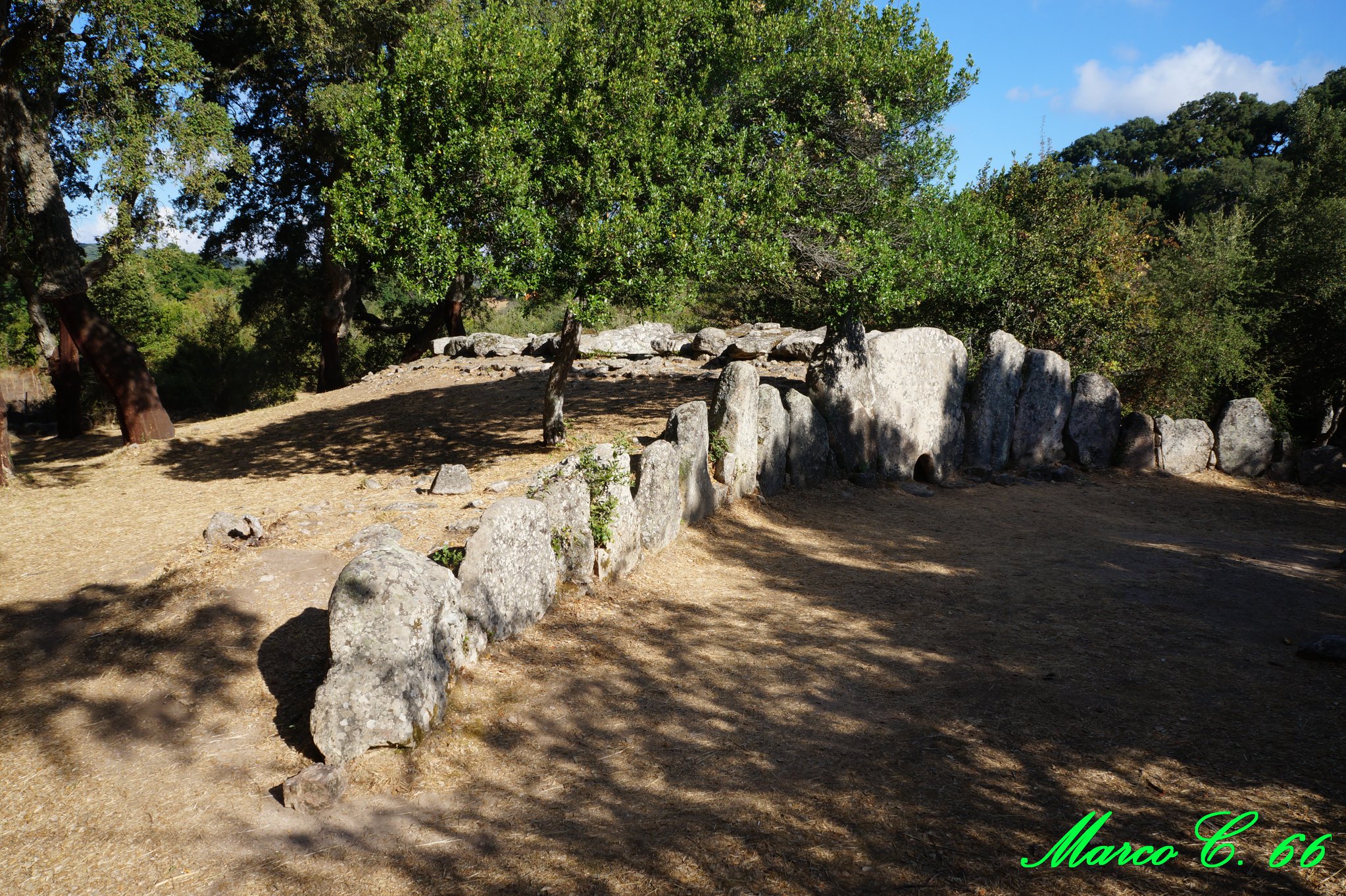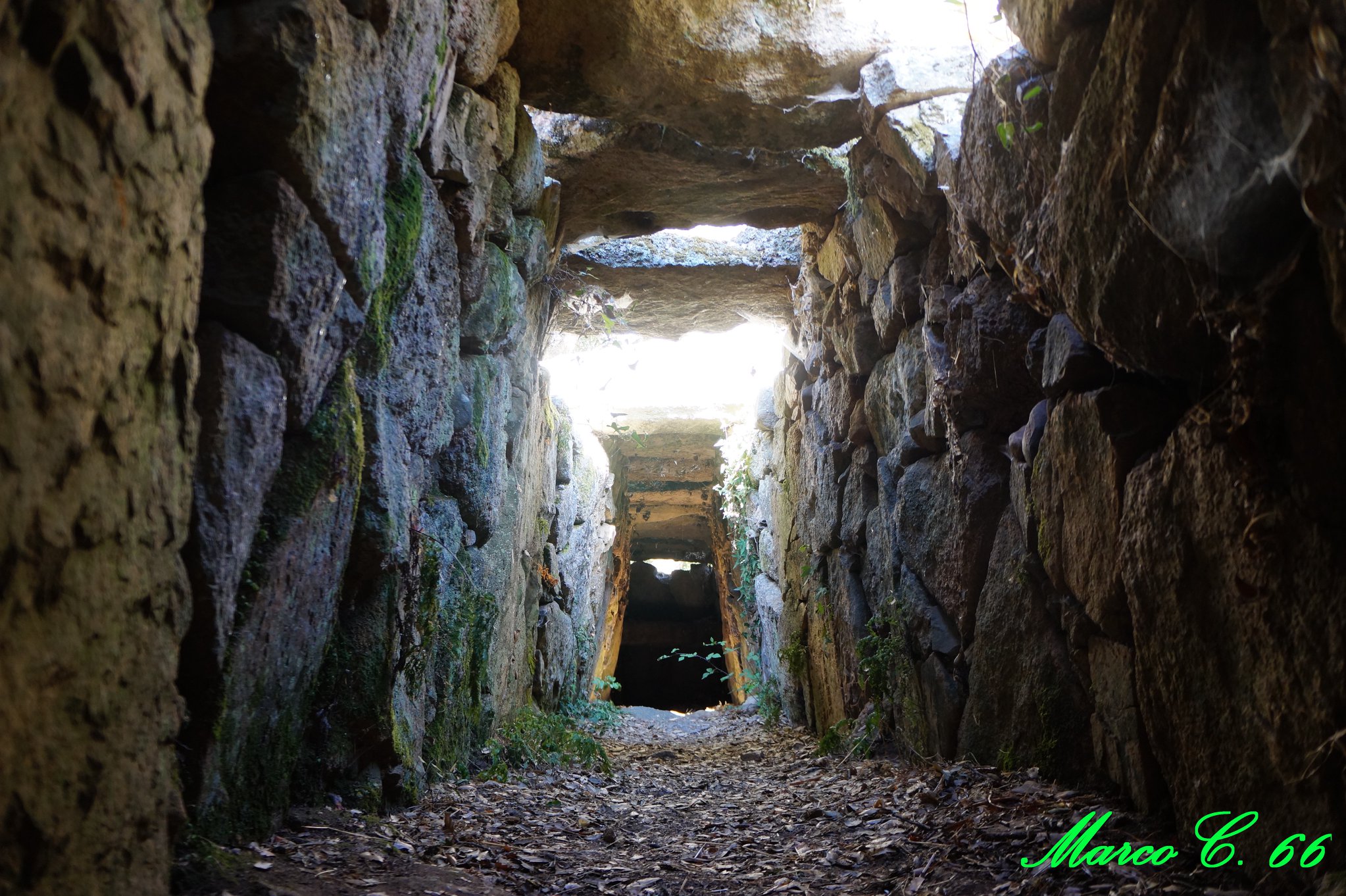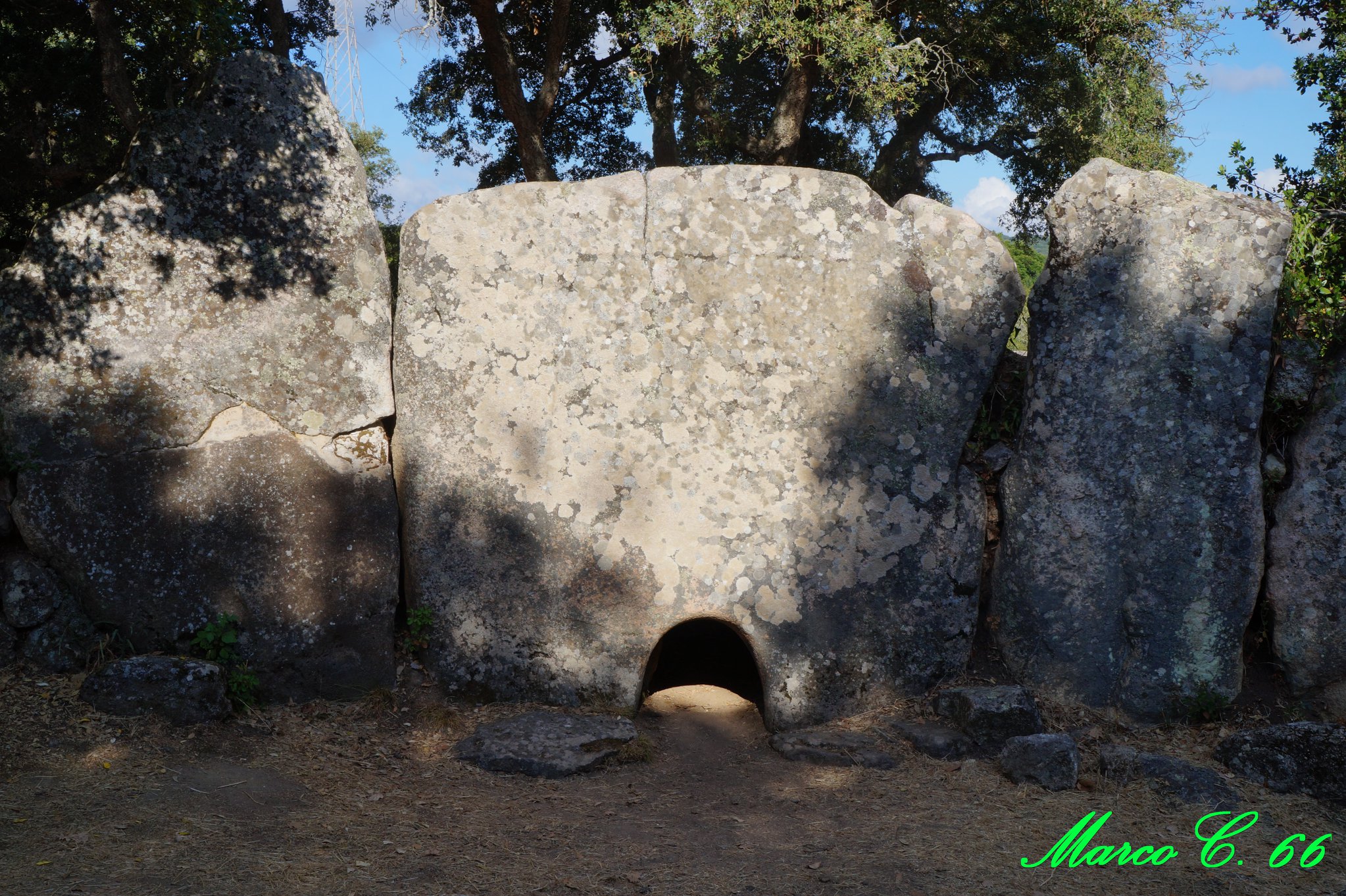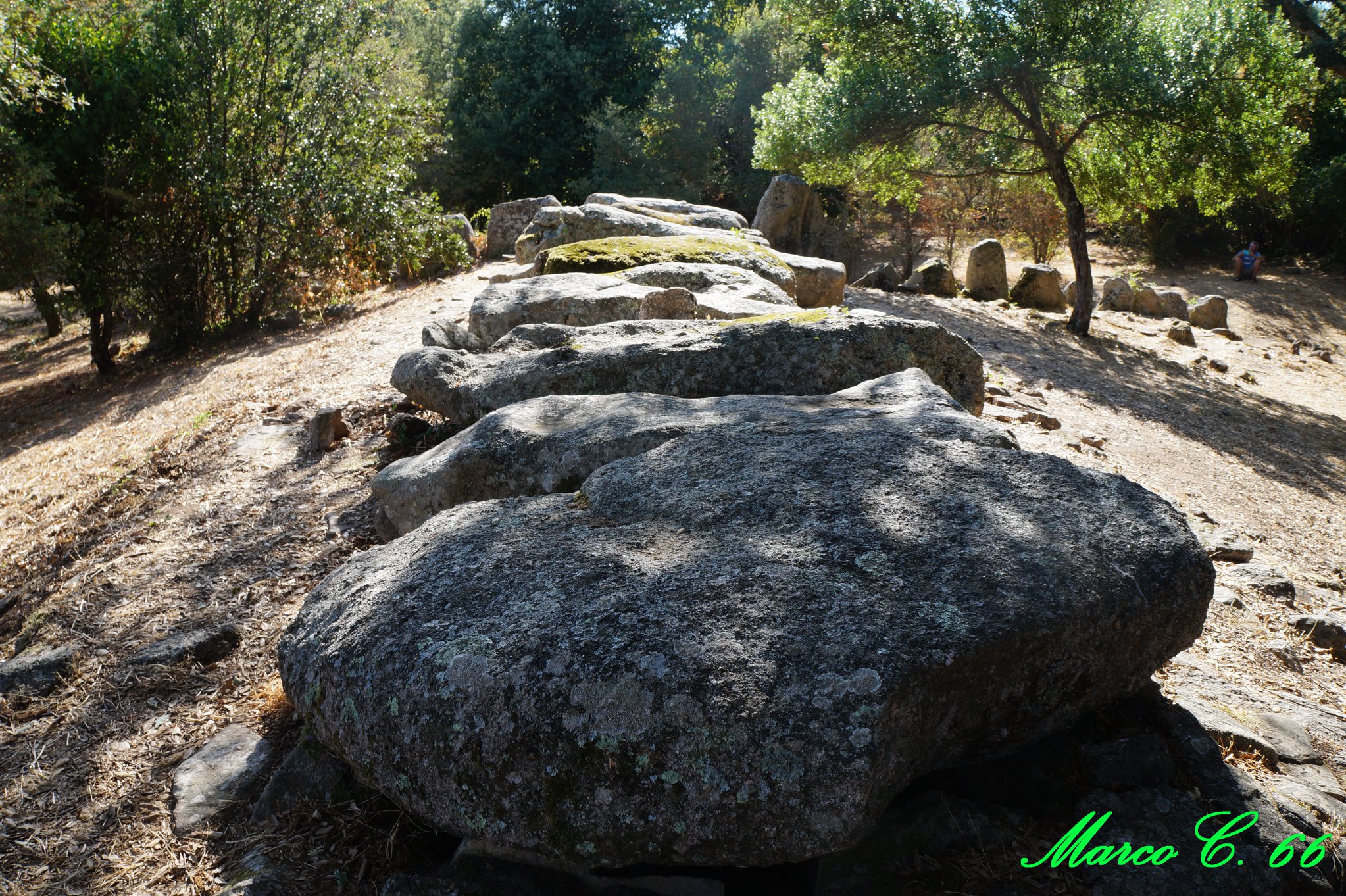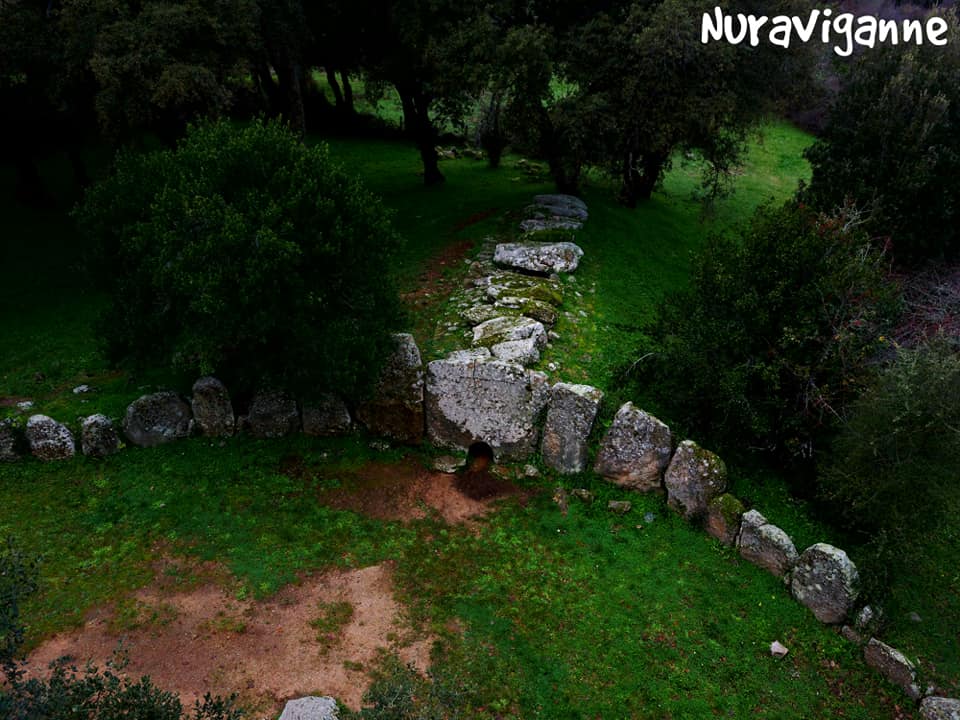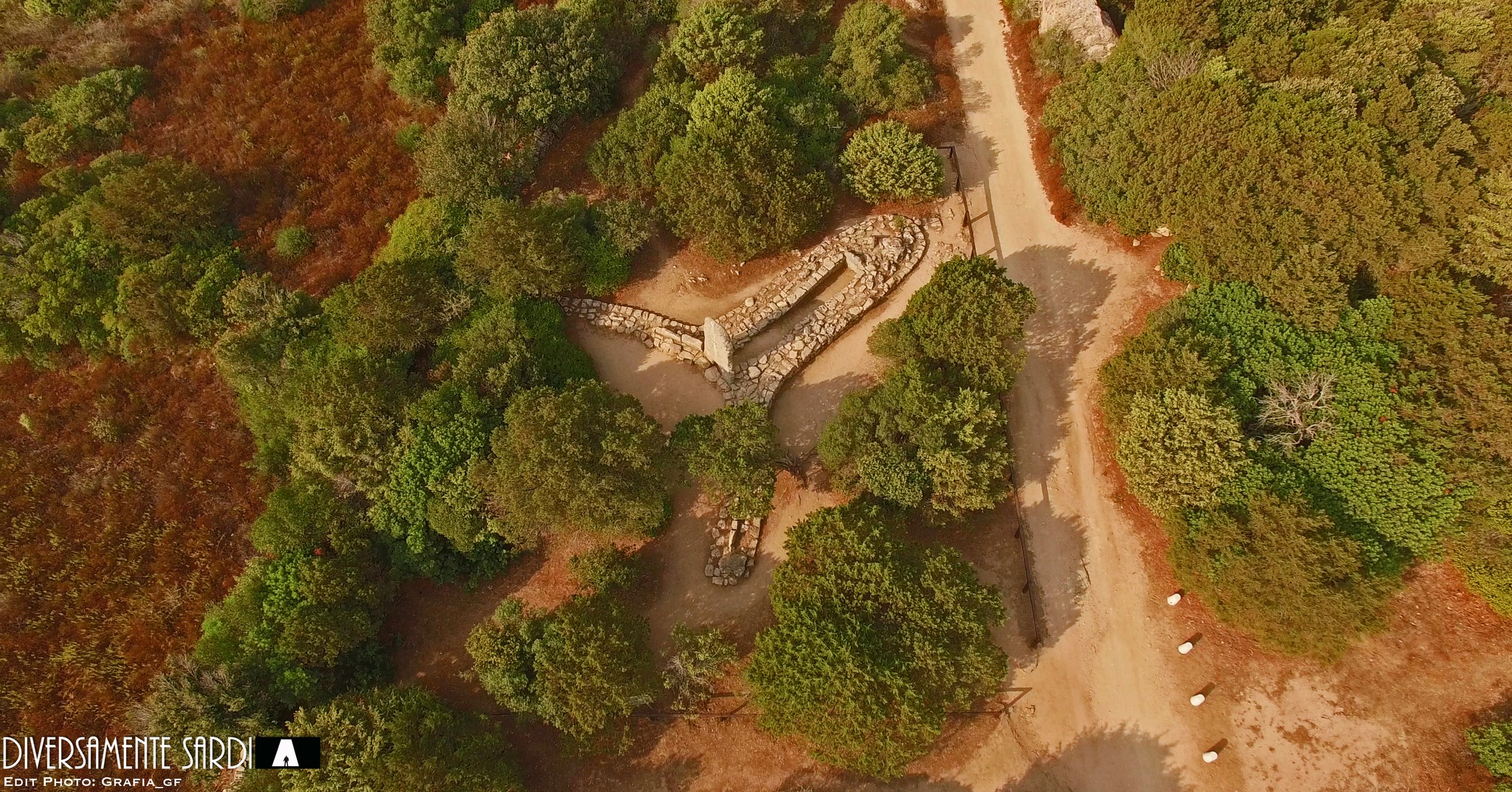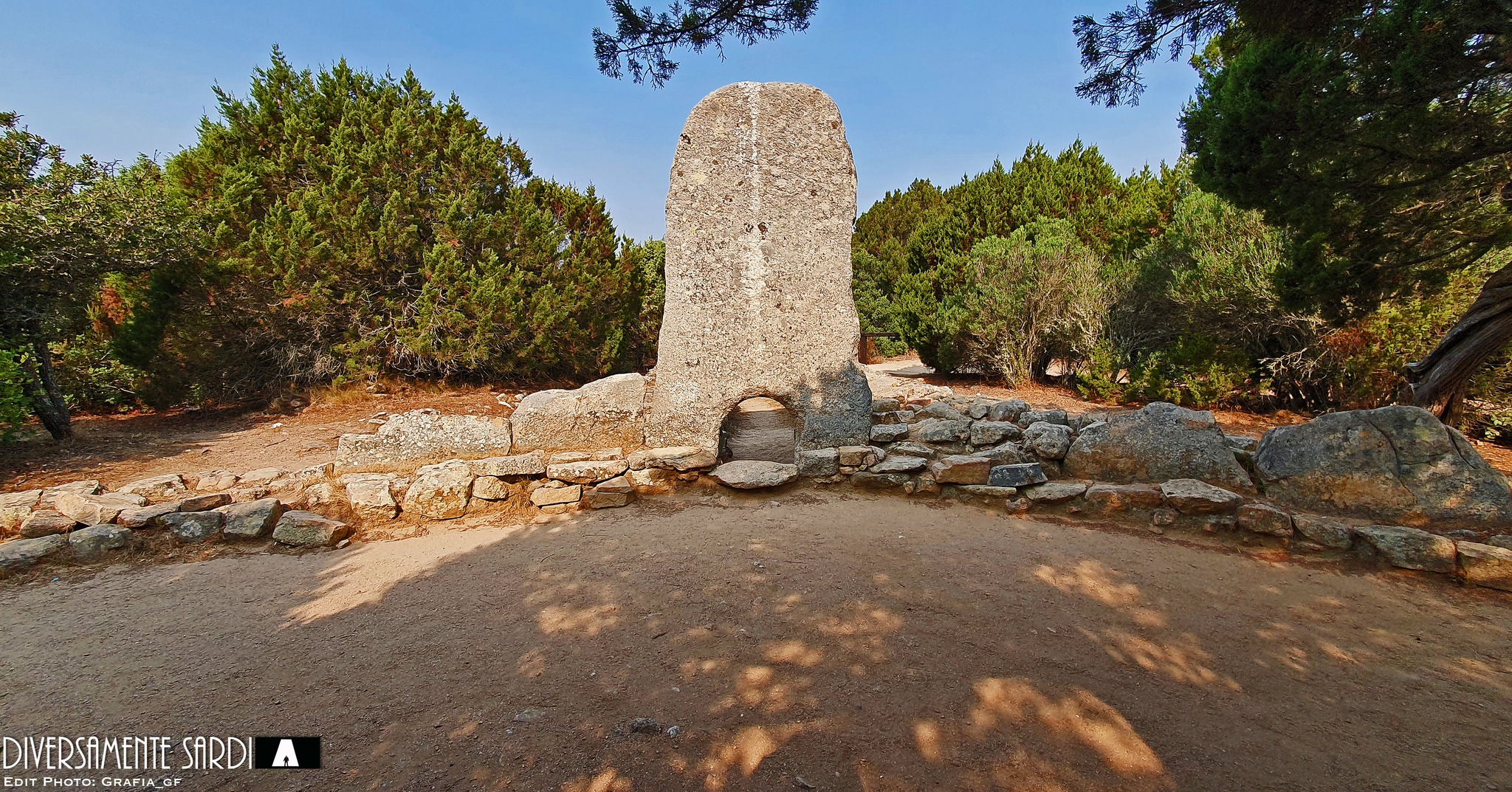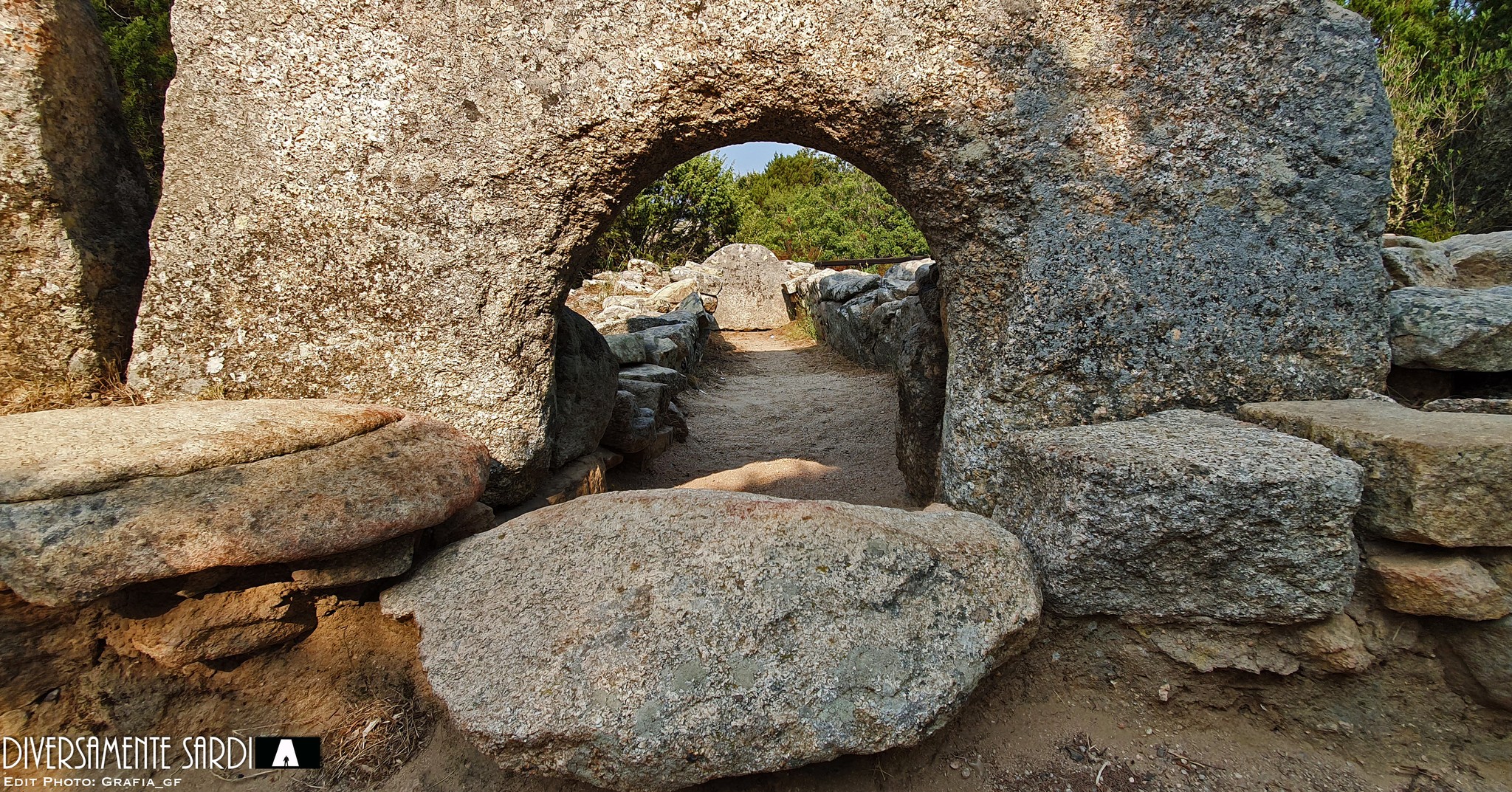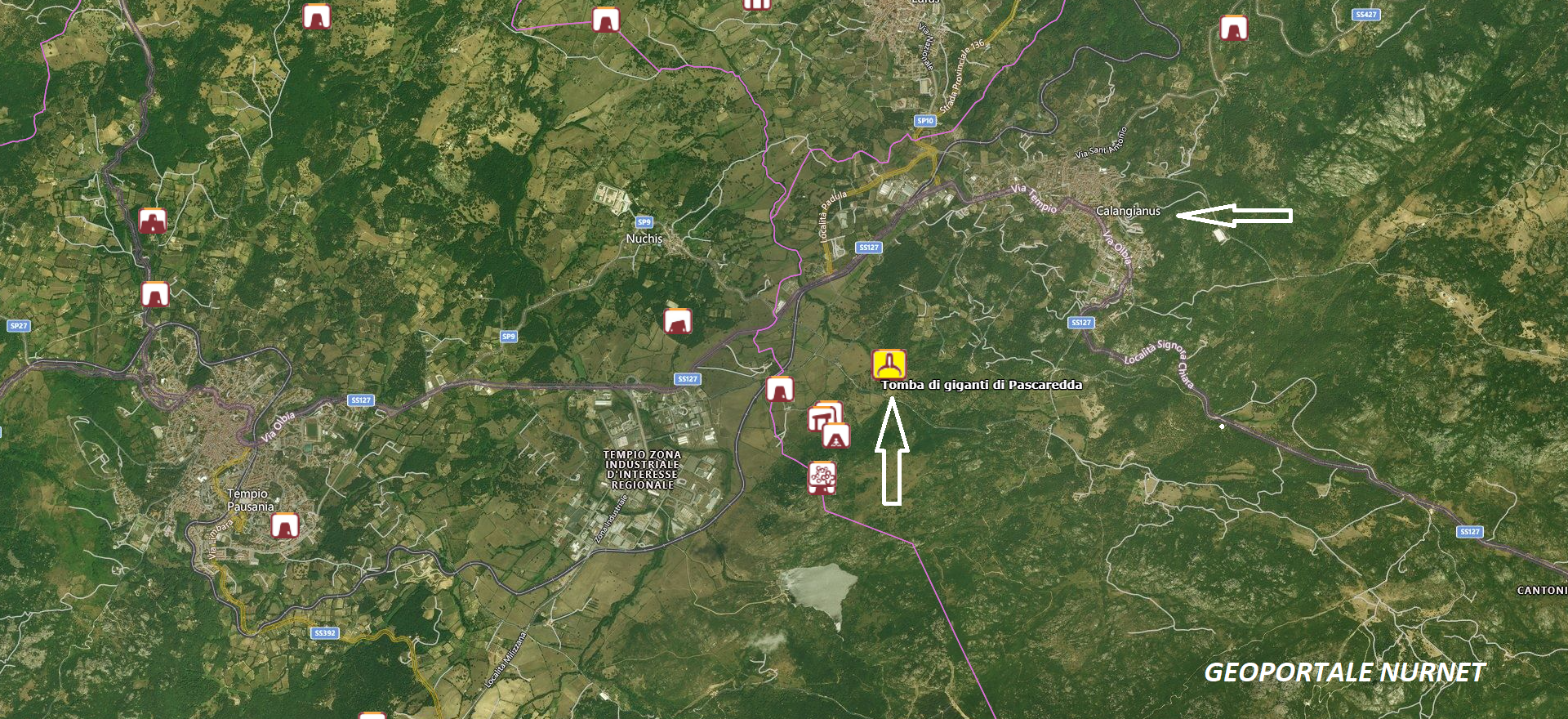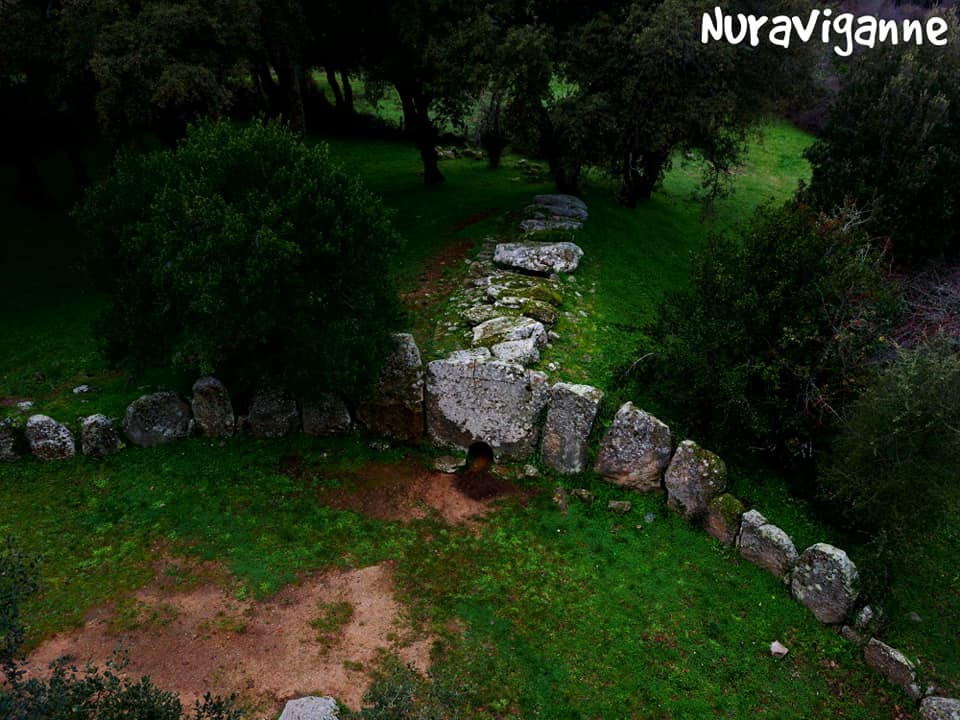2a and 1f: Located within an oak forest, at the northern slopes of Monte di Deu, the tomb of giants of Pascareddha is one of the most interesting monuments in the territory of Calangianus. It belongs to the type of burial with rows and arch-shaped stele. The burial partially retains the rectangular and apse-like tomb structure, built with granite blocks arranged in regular rows. The rectangular funeral corridor (length 12.5 m; width 0.90 m; height 0.90 m) has walls constructed at the base with granite slabs set vertically; on these rest rows of blocks with slight overhang. Today, 12 transverse slabs remain of the flat-covered roof. The hemicycle of the exedra (width 18.40 m) is made up of orthostats – 10 on the left side and 6 on the right side – decreasing in height from the center towards the sides. The slabs have a well-finished visible surface. At the center of the exedra was placed the bilithic stele, of which today only the lower part (height 2.10 m) remains “in situ”. The slab features the usual raised frame and, in the center, a curved entrance door. Fragments of the upper arch-shaped part are now scattered around the burial. The tomb can be dated to the Middle Bronze Age, Recent Bronze Age. (Sardegna Cultura)
The tomb of giants of “Li Mizzani”, in Palau, is built using the row technique. The tomb structure contains a rectangular funeral corridor; closed at the back by a single arched headstone slab. The exedra is only partially preserved: the hemicycle is bounded by smaller orthostatic slabs, at the base of which a low bench-seat develops, also incomplete, intended to hold offerings. The rear wall of the exedra connects seamlessly with the tomb structure.
The photos of the tomb of giants of Pascareddha, in Calangianus, are by Manlio Rubiu and Marina Olla, Marco Cocco, and Nuraviganne. The photos of the tomb of giants Li Mizzani, in Palau, are by Diversamente Sardi.


